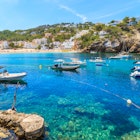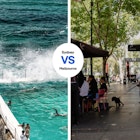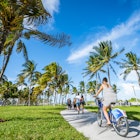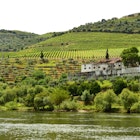
Jul 7, 2025 • 4 min read
Guy Fieri is not only a culinary personality; he’s also a savvy traveler who lives to explore cultures through cuisine.

Jul 7, 2025 • 4 min read
Guy Fieri is not only a culinary personality; he’s also a savvy traveler who lives to explore cultures through cuisine.

Jul 7, 2025 • 5 min read
The laid-back city of Chiang Mai in Northern Thailand is a blend of ancient temples, vibrant street food and natural wonders

Jul 7, 2025 • 8 min read
Ibiza is one of the most popular, more lively islands in the Mediterranean. Away from the superclubs, there's a quieter side of the island to explore.

Jul 7, 2025 • 6 min read
In the heart of the American Midwest, Kansas City has become a culinary hot spot. These are all the dishes and drinks you need to try when you’re there.

Jul 7, 2025 • 5 min read
With soft golden sand and clear, blue water reflecting rugged peaks, Lake Tahoe’s beaches are remarkable. These six are the absolute best.

Jul 7, 2025 • 5 min read
With woodlands, heaths, commons and gardens, London is one of the greenest cities in the world. Here are the capital's very best parks.

Jul 7, 2025 • 7 min read
From its prime dining culture to superb shopping and cultural attractions, here are the best things to do in Fukuoka, Japan.

Jul 7, 2025 • 8 min read
Dazzling Sydney or cultured Melbourne? Two writers take sides in the contest between one's shining surroundings and the other's days full of diversions.

Jul 7, 2025 • 13 min read
From the top beaches to the resorts with the liveliest nightlife and the best fish and chips, here's everything you need to know about the seaside in England.

Jul 7, 2025 • 9 min read
London's V&A is a treasure trove of gorgeous objects spread over 140 galleries in an equally stunning museum. Here's how to make the most of your visit.

Jul 7, 2025 • 7 min read
From a paddle in the Seine's new bathing zones to a dip in a beautiful public pool, beat the summer heat in Paris with this swimming guide.

Jul 6, 2025 • 5 min read
Annual festivals in Greece range from small village observances to internationally famous blowouts. These are six of the best ones.

Jul 6, 2025 • 5 min read
From booking in advance to dos and don'ts once you're there, here's what you should know before heading to the Grand Canyon.

Jul 6, 2025 • 10 min read
From shooting to the top of the Space Needle for amazing city views to getting your fill of quality coffee, here are Seattle's top things to do.

Jul 6, 2025 • 8 min read
Glitzy Miami could easily drain your vacation fund, but there are plenty of ways to save money in the the Magic City and still have a great time.

Jul 5, 2025 • 6 min read
From folk music to fabulous outdoor adventures to excellent museums, these are the best things to do in Arkansas.

Jul 5, 2025 • 6 min read
Plan the perfect time for your visit to California's addictive Big Sur with this seasonal guide.

Jul 5, 2025 • 6 min read
Porto is an ideal launch pad to visit other towns, cities and regions in northern Portugal. Here are six great day trips.

Jul 5, 2025 • 6 min read
Philadelphians are big-hearted, loyal and sometimes a bit rowdy, while the city itself offers the a blend of historic charm and soul, with plenty to do.

Jul 4, 2025 • 11 min read
Tantalizingly close to shore, the Channel Islands offer hikes and camping adventures within easy reach of the California coast.

Jul 4, 2025 • 5 min read
If you’re looking for the best beaches around Porto for seaside strolls, birdwatching and surfing, don’t miss these top 5 destinations.

Jul 4, 2025 • 9 min read
Here’s your easy guide to crossing the city, heading to the beach and even reaching Mexico by train in Southern California.